Abstract
During the period August 1957 to December 1966, the Committee on Maternal and Child Care of the California Medical Association and the State Department of Public Health studied 1,219 deaths of women who died during or within 90 days of termination of pregnancy. Twenty-two percent of the deaths reviewed were considered unavoidable. Seventy percent had one or more avoidable factors; of these, 46 percent were attributed to errors in professional judgment, and 16 percent to inadequate prenatal care by the patient herself.
Nearly one-third (383) of the 1,219 cases reviewed were deaths from non-obstetric causes. Of the 836 deaths from obstetric causes, 260 were attributed to abortion. Preliminary figures suggest a reduction in criminal abortion deaths corresponding to the increase in therapeutic abortions since 1968.
Over one-third of the deaths occurred in Mexican and Negro mothers. Death rate for Negro was triple that for white mothers. Despite the presence of four medical schools in District II (Los Angeles County), maternal death rates were 30 to 50 percent higher than in other districts due to the large urban black and Chicano population. One rural district with a large migratory agricultural population also had high rates.
Full text
PDF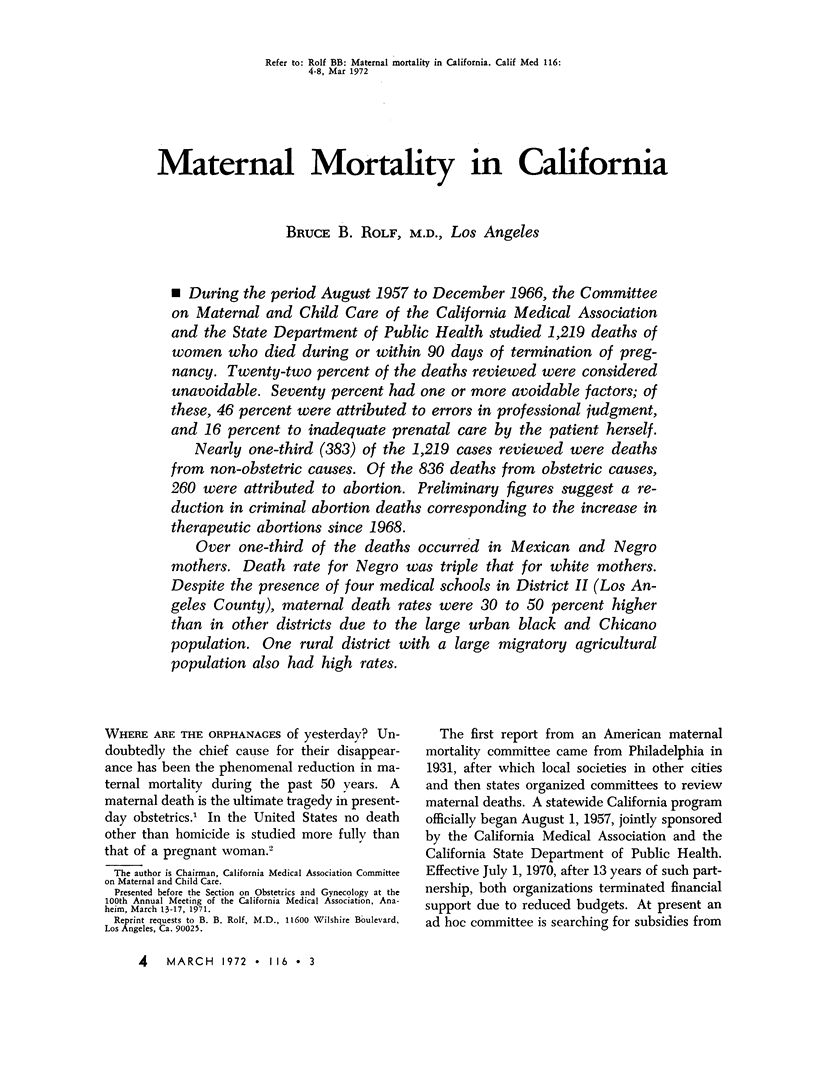
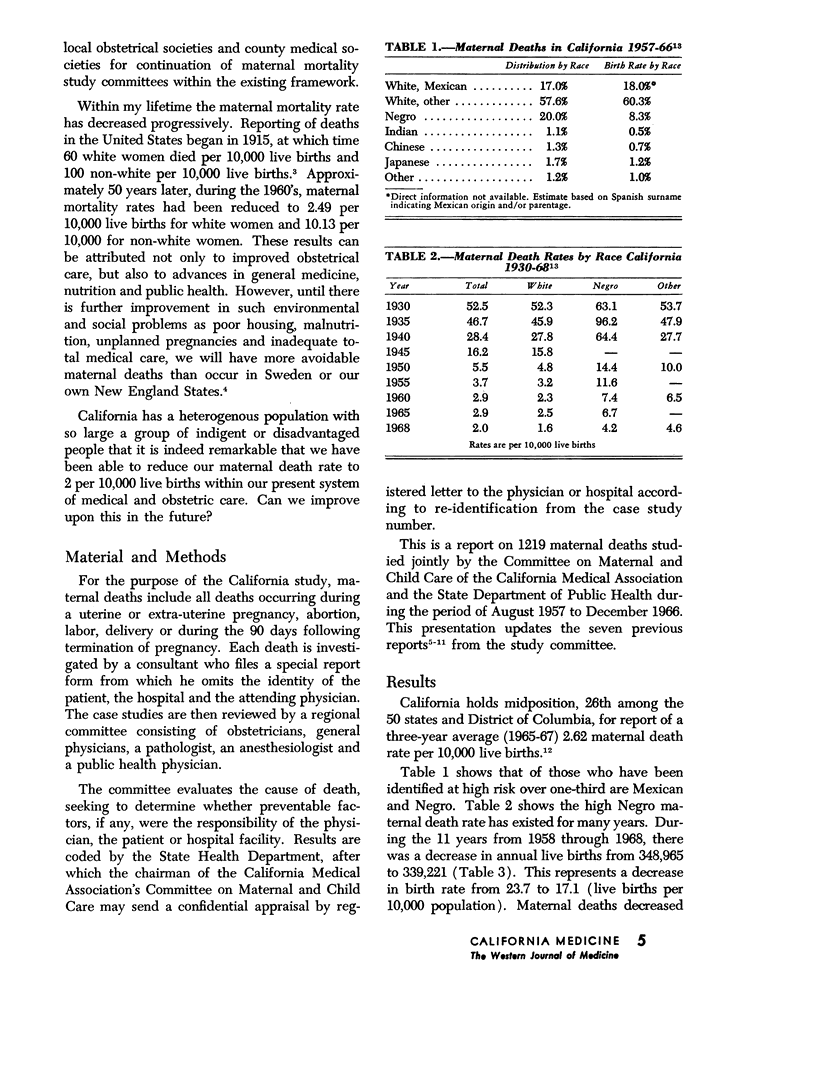
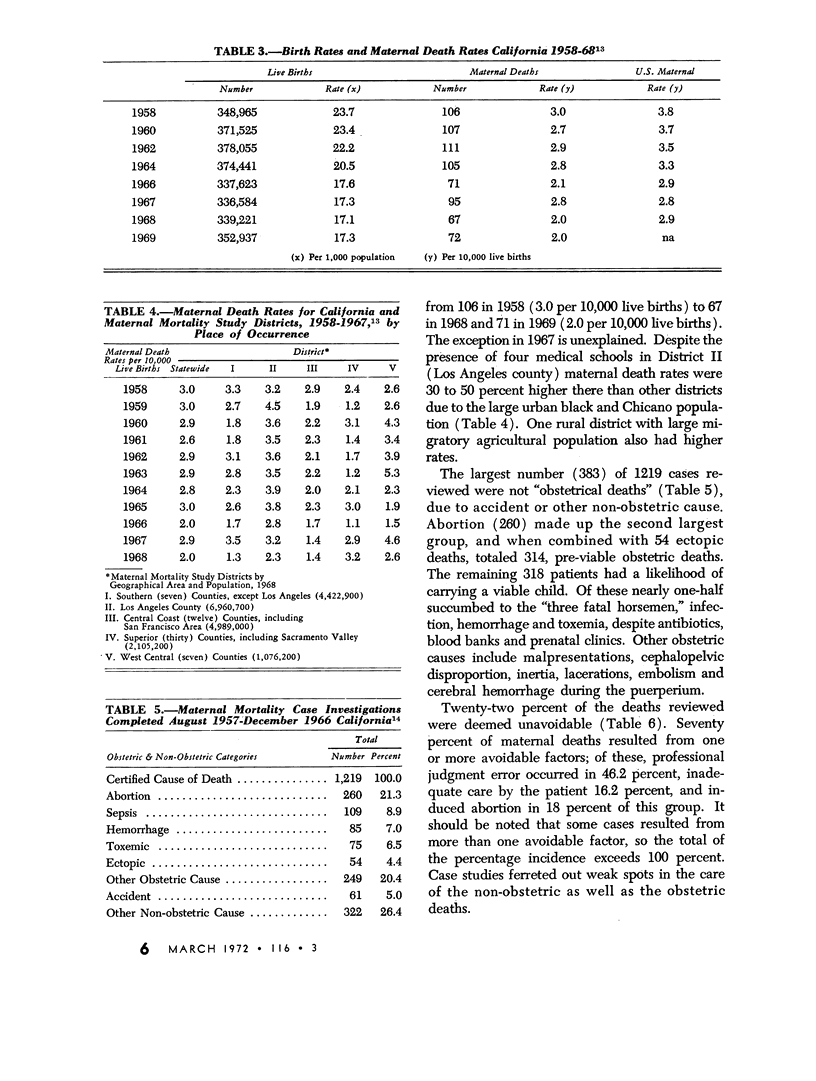
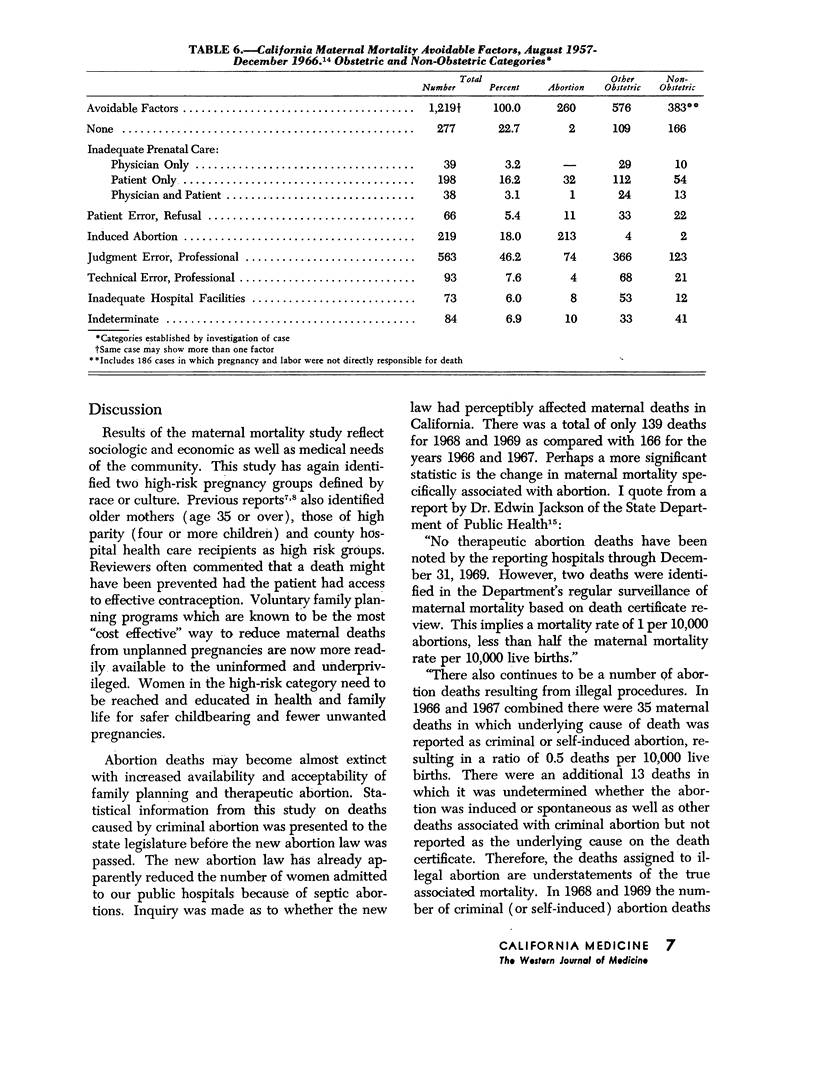
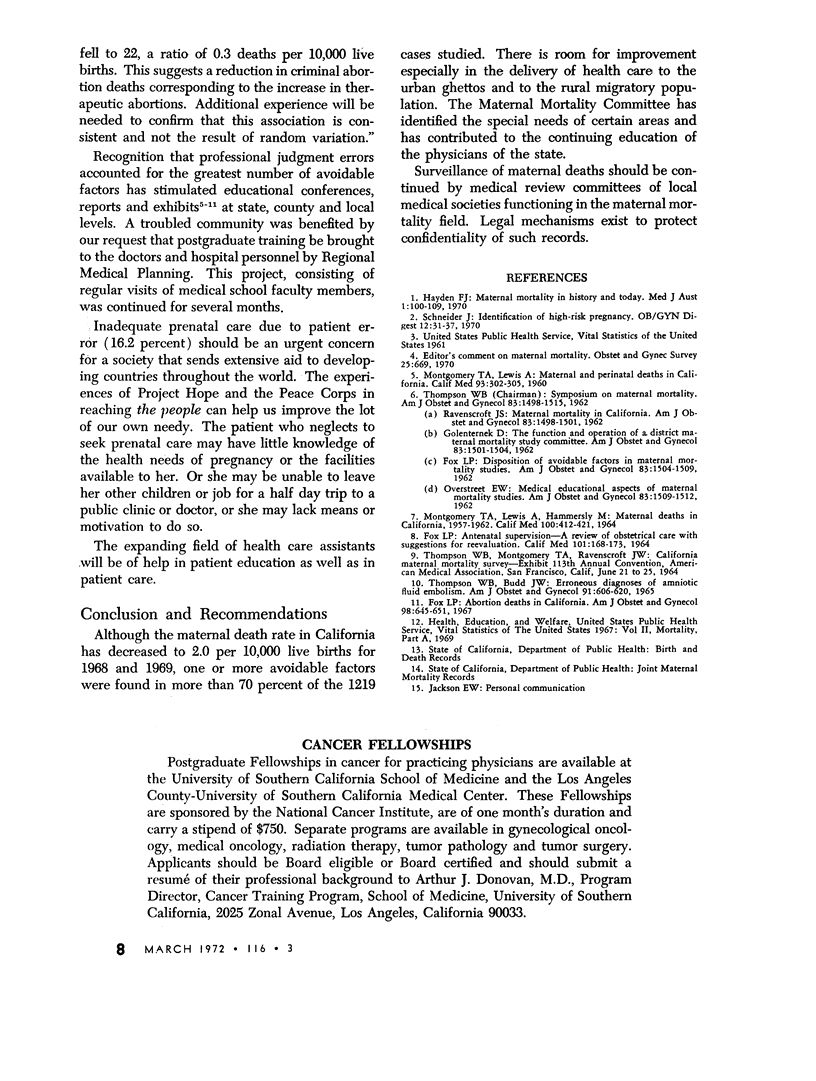
Selected References
These references are in PubMed. This may not be the complete list of references from this article.
- FOX L. P. ANTENATAL SUPERVISION. A REVIEW OF OBSTETRICAL CARE WITH SUGGESTIONS FOR REEVALUATION. Calif Med. 1964 Sep;101:168–173. [PMC free article] [PubMed] [Google Scholar]
- FOX L. P. Disposition of avoidable factors in maternal mortality studies. Am J Obstet Gynecol. 1962 Jun 1;83:1504–1509. doi: 10.1016/s0002-9378(16)35999-3. [DOI] [PubMed] [Google Scholar]
- Fox L. P. Abortion deaths in California. Am J Obstet Gynecol. 1967 Jul 1;98(5):645–653. doi: 10.1016/0002-9378(67)90177-9. [DOI] [PubMed] [Google Scholar]
- GOLENTERNEK D. The function and operation of a district maternal mortality study committee. Am J Obstet Gynecol. 1962 Jun 1;83:1501–1504. doi: 10.1016/s0002-9378(16)35998-1. [DOI] [PubMed] [Google Scholar]
- Hayden F. J. Maternal mortality in history and today. Med J Aust. 1970 Jan 17;1(3):100–109. [PubMed] [Google Scholar]
- MONTGOMERY T. A., LEWIS A., HAMMERSLY M. MATERNAL DEATHS IN CALIFORNIA, 1957-1962. Calif Med. 1964 Jun;100:412–421. [PMC free article] [PubMed] [Google Scholar]
- MONTGOMERY T. A., LEWIS A. Maternal and perinatal deaths in California. Calif Med. 1960 Nov;93:302–305. [PMC free article] [PubMed] [Google Scholar]
- OVERSTREET E. W. Medical educational aspects of maternal mortality studies. Am J Obstet Gynecol. 1962 Jun 1;83:1509–1515. doi: 10.1016/s0002-9378(16)36000-8. [DOI] [PubMed] [Google Scholar]
- RAVENSCROFT J. W. Maternal mortalityin California. Am J Obstet Gynecol. 1962 Jun 1;83:1498–1501. doi: 10.1016/s0002-9378(16)35997-x. [DOI] [PubMed] [Google Scholar]
- THOMPSON W. B., BUDD J. W. ERRONEOUS DIAGNOSES OF AMNIOTIC FLUID EMBOLISM. Am J Obstet Gynecol. 1965 Mar 1;91:606–620. [PubMed] [Google Scholar]


